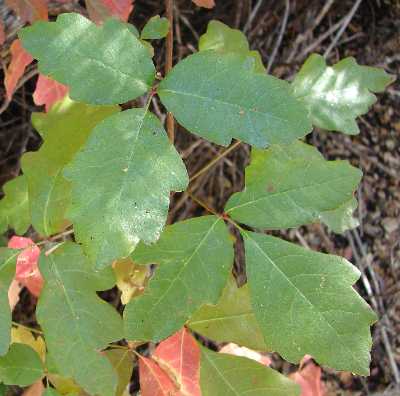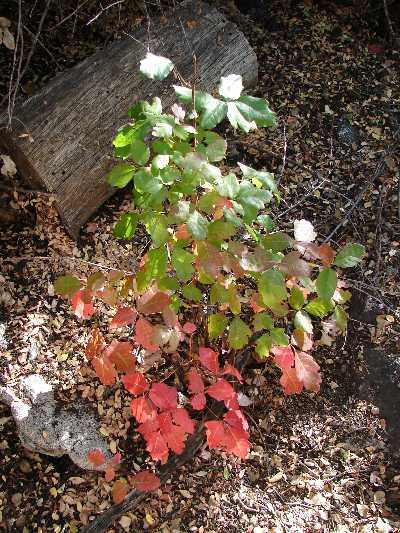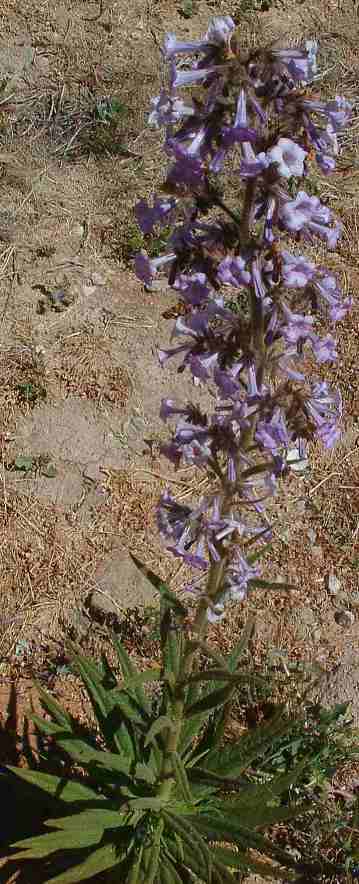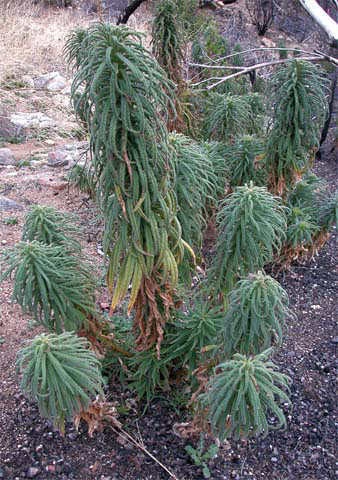Noxious plants
Run into any of these unsavory characters out in the brush
and you're just asking for an itch or a nasty scratch.
TOXICODENDRON DIVERSILOBUM or formerly RHUS DIVERSILOBA
Western Poison-oak or Pacific Poison-oak is found only on the Pacific Coast of the United States and of Canada. It is extremely common in that region, where it is the predominant species of the genus. The plant is often found in oak woodlands and Douglas-fir forests. It can also be found in damp, shady areas near running water and out of direct sunlight. Any trail leading to a waterfall will most likely be home to western poison-oak.
Western Poison-oak leaves and twigs have a surface oil, urushiol, that is an allergenic irritant.
Leaves that have three - Let them be!
 |
 |
Toxicodendron Diversilobum
Western Poison-Oak
________________________________________________________
Poodledog bush
TURRICULA PARRYI
After a wildfire, the dry ridges of Southern California may be invaded
by the
quaintly named poodledog bush. But all charm ends here, for the sticky
and strong-scented poodledog is covered with stiff microscopic hairs
that deliver a
noxious punch. These glandular hairs, known as trichomes, discourage
herbivores
and plague passing hikers who brush up against the foliage. The
chemicals —
prenylated phenolics — emitted by the hairs cause dermatitis and an
inflammation similar to that caused by poison oak. The scientific name
Turricula means "little tower" in reference to the stalk of deep blue
flowers that rises over the plant in the spring.
Key characteristics: This stout and densely leafed plant can
form thickets growing nearly 10 feet tall. The long linear leaves may be rolled
under along their margins.
 |
 |
Poodledog bush
| Latin name: | Turricula parryi |
| Pronunciation: | ter-IK-yoo-la PARE-ee-eye |
| Common name: | Poodle-dog bush |
| Family: | Hydrophyllaceae (Waterleaf) |
| Habitat: | Chaparral, dry granitic soils of slopes and ridges to 7000', |
| yellow pine forest, disturbed places and burns |
|
| Blooming period: |
June to August |
____________________
Return
Home